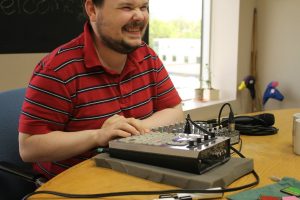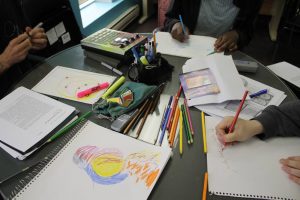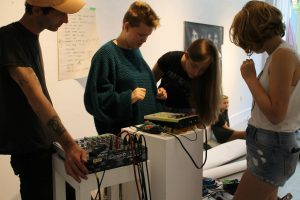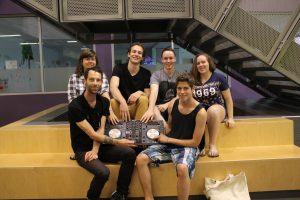One rather important element to my current covid situation is that I’m not actually teaching in a classroom, online or otherwise. Which was obviously not the intention upon applying for TRU online teaching and learning certificate last year. I didn’t realize how crucial the resources I was hoping to have through the school I would’ve been working at, would have been. My assumptions about online and remote education have really changed due to these unforeseen global circumstances.
The social and ethical topics around education are of great interest to me, and my experience in teaching so far has not been from wealthy schools or privileged circumstances. I feel personally invested in my students and always try to have a positive impact on their life. So confirming basics like equal access to all resources for all students, is a priority in moving forward with the new normal. Having the appropriate technology and the available assistance when necessary will provide a more balanced opportunity for all students. This doesn’t of course guarantee success, but at the very least all of the tools one may need are accessible. As an educator I need to put more contemporary technology into use in my lessons, and become more proficient with software, hardware, apps and the networks for information. I will inevitably become more available and resourceful for students, the more confident and fluent I am with technology. To further that, something else I’d like to put into practice is a better learning design through the content and delivery. As an arts teacher I have acquired many soft skills, but I seek to achieve more of a balance by developing more hard skills. Even simple ones like organization, that would be a huge asset to my professional and personal life.
I also want to improve my own digital literacy and be confident in having more conversations about the idea of being a responsible digital student and citizen. Digital literacy is a part of a larger conversation about the media and politics, and the socio-economic gap between in societies which of course greatly affects education. Being responsible for your actions both in real life and online, and practicing respectful and constructive dialog with everyone.
As an arts teacher, my recommendation for a future employer would be a focus on the skill of improvisation, creative problem solving and holistic alternatives as a main idea to pivot from. Spending more time and resources for developing strategies to be adaptive and flexible, which comes is good for learning and everyday life. I see some version of hybrid learning environments as the inevitable future of teaching and learning. Not many people, myself included, would prefer to be doing all of their studying online, all of the time. So if possible, some face-to-face and group learning scenarios would be highly beneficial even if it’s infrequent. I believe humans benefit from physical interaction and real time free play with others, and ideas are best translated through context, rather than content. Years ago in rural Nova Scotia I participated in a very productive workshop that was conducted entirely outdoors, and was essentially ‘lessons from nature’. I found that creating a learning environment in the outdoors, had a profoundly positive impact on everyone’s mutual engagement in the sessions.
The area of Southern Ontario that I currently live in, has a dramatic socio-economic divide that is very clear but completely unspoken. There is an upper class who champion the prestigious private schools and Brock University, there are as well handfuls of cathodic and public K-12 schools sprinkled in the suburbs and inner city. The industry here has always been tourism through the Falls and more importantly, wine culture which of course caters to a specific demographic. The homeless population has exploded over the past few years, while the price of housing and education continues to rise. The local areas relationship to education would improve if equal resources were supplied to all of the K-12 schools, and tuition costs were not so extreme for out of province and international students. I am happy to learn about all the countless programs, sites and resources already available to teachers and students online, and many of them free. I believe in making self-sufficient learners, who are proactive, prepared and adaptive learners.
Jesse





Recent Comments